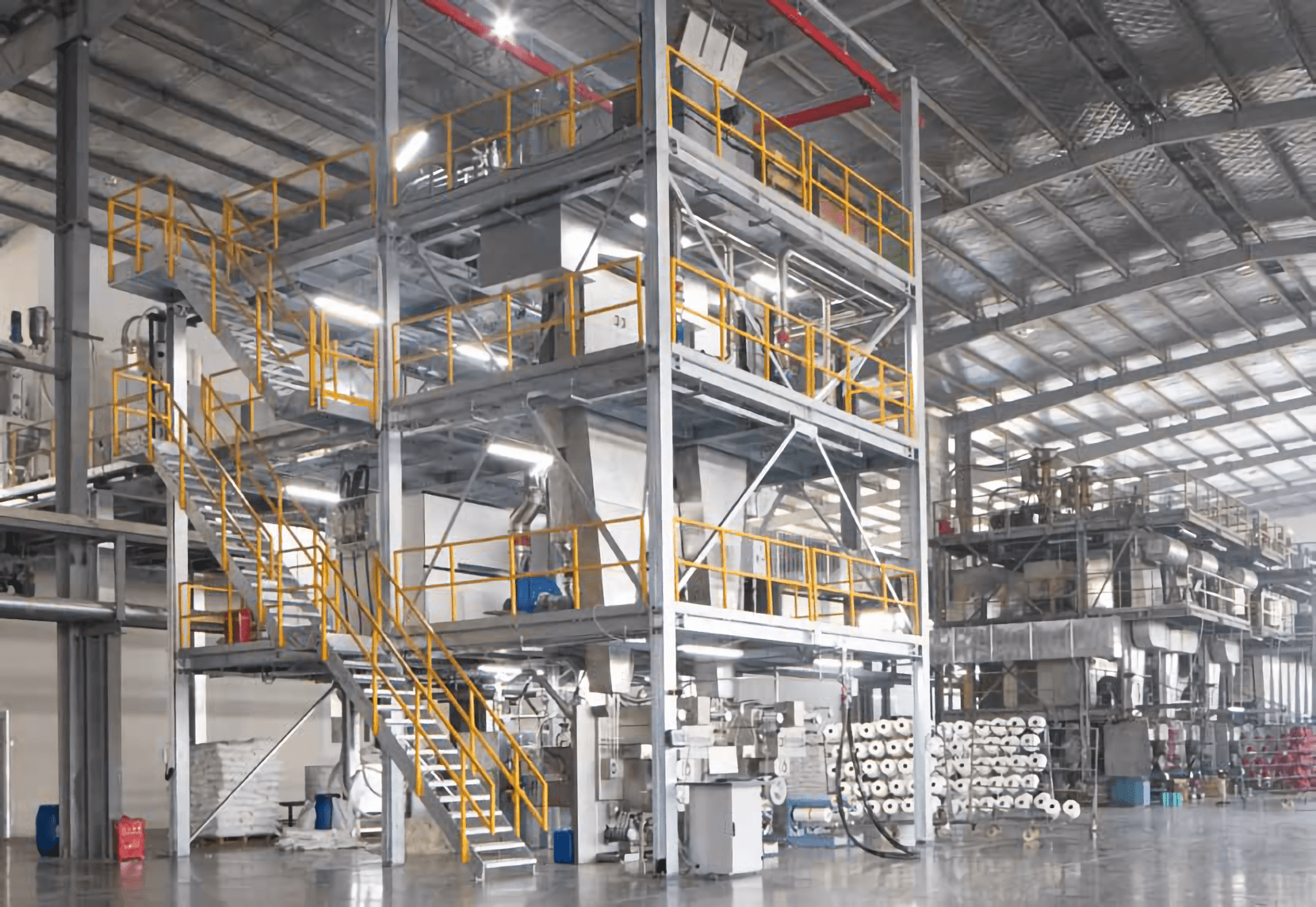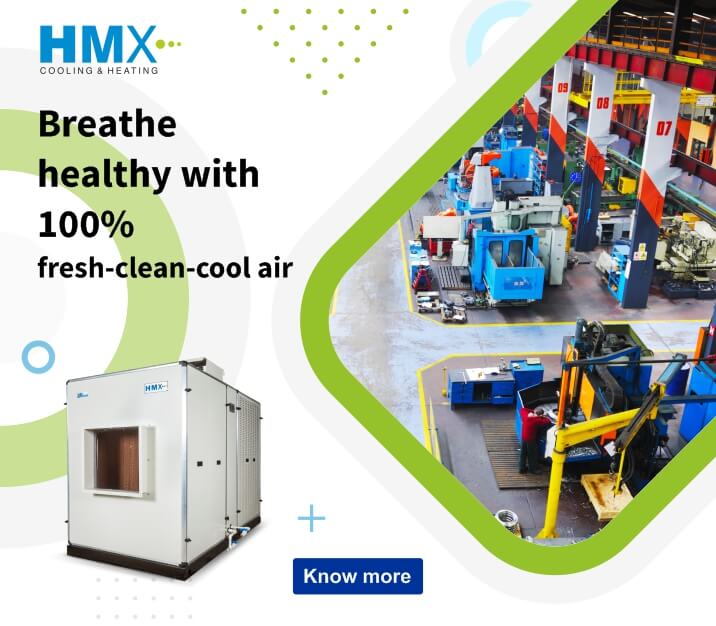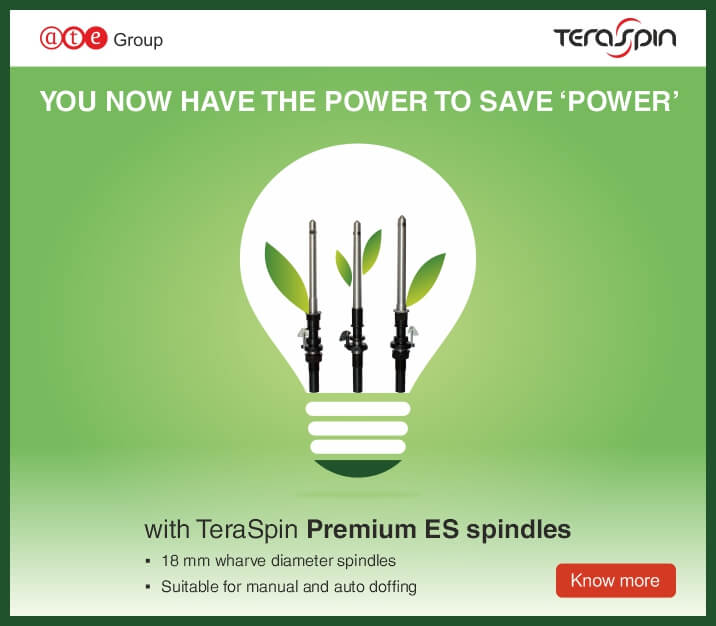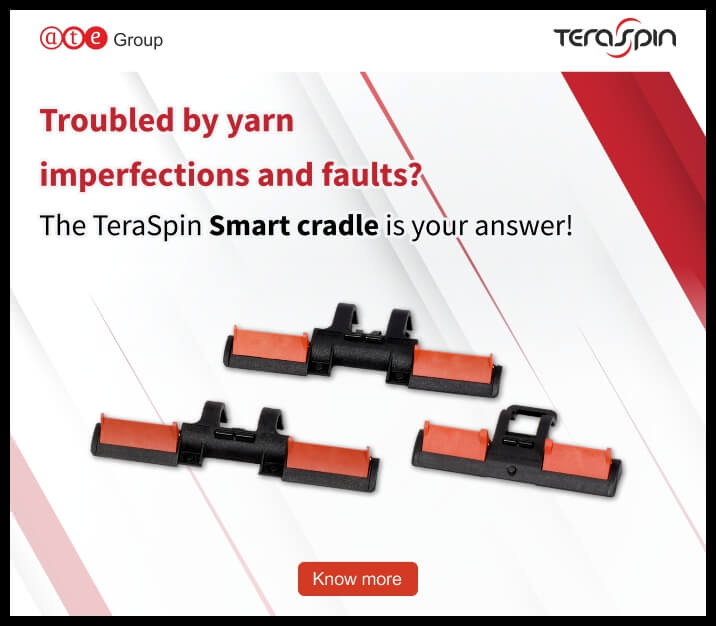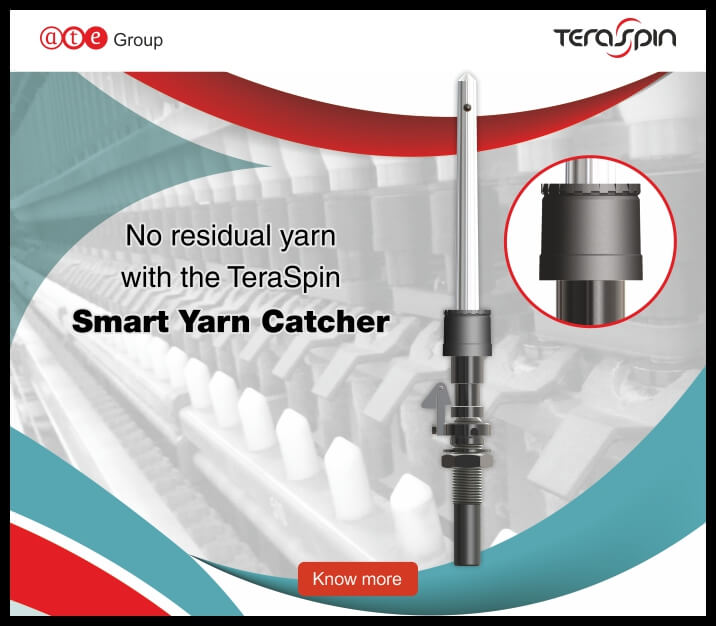Truetzschler OPTIMA for 4-end BCF spinning
The Truetzschler OPTIMA concept which was designed as a single machine for carpet filament yarn production initially has now evolved into a system platform, with the introduction of the MO40-E. Truetzschler Man-Made Fibers’ Optima range of carpet yarn machines consists of the compact MO40-C extrusion system for standard yarn and the MO40-E for standard and specialty Bulk Continuous Filament (BCF) yarn production.
MO40-C – a 4-end extrusion system for standard BCF filament yarns
Unveiled at ITMA 2019, Barcelona, the Truetzschler “OPTIMA” is a proprietary 4-end carpet yarn machine. Today, MO40-C BCF systems are running stably and efficiently at various customer sites.
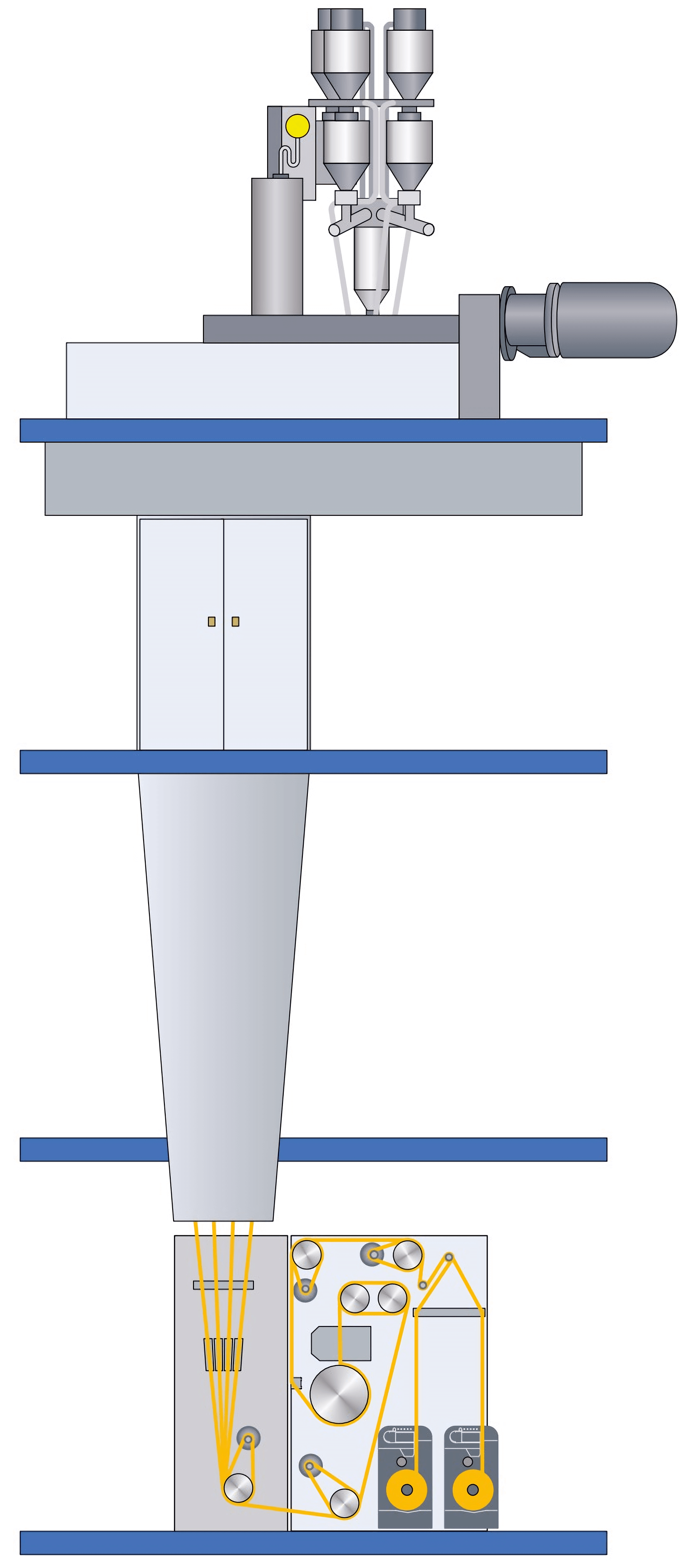
Figure 1 Truetzschler MO40-C
The production window of the MO40-C is impressive as 4 ends can be spun and wound simultaneously on bobbins. The high productivity of 4 yarn ends applies to the MO40-C not only for standard yarns but also for finer low-dpf (denier per filament) qualities down to 1.5 dpf. Thanks to a very short melt line from the extruder to the spin beam and the symmetrical yarn path through the machine, four high-quality, identical threads are created. Each bobbin of a spinning position has the same yarn characteristics in each section. The minimum yarn count for 4 bobbins is 500 dtex, by plying two threads and 2 bobbins, with up to 6,000 dtex being produced in one position.
A main objective of the OPTIMA project was to reduce the space required for one spinning position. With a footprint of 2,000 mm x 2,000 mm, the MO40-C can fit in a small space if the system has to be planned into an existing hall. Even in a new building, the MO40-C’s high production output per square meter is a notable feature. In fact, the MO40-C has the industry’s highest throughput of yarn per square metre of production space.
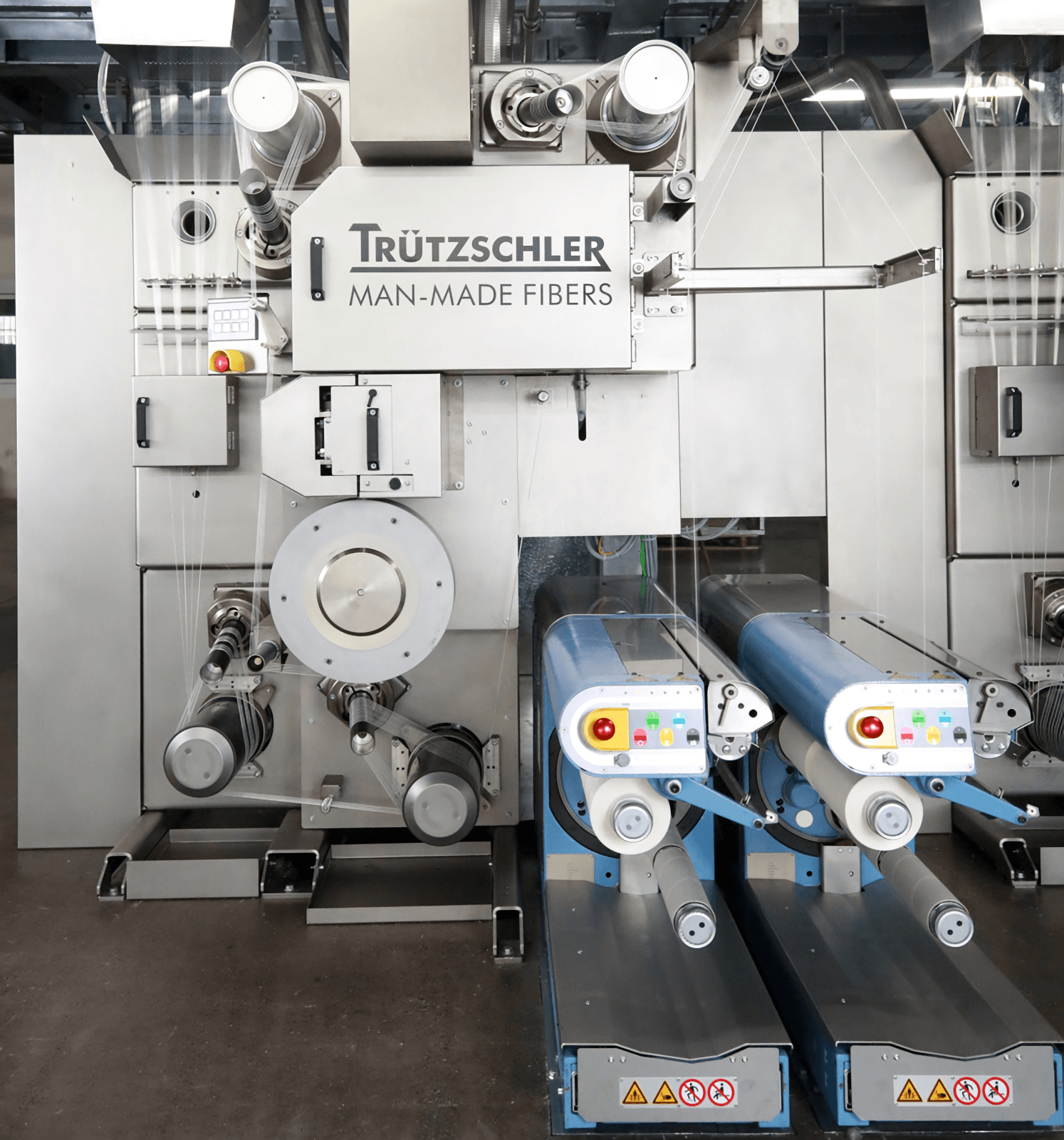
In recent years, the demand for smooth, velvety carpet surfaces has increased. Innovations in this area are in demand because only a large number of finest carpet yarns can produce the desired velvety-smooth surface effect. The production of so-called high-count yarns with the smallest single filament titre is demanding – but with the new MO40-E it is within reach.
More filaments in a BCF yarn require more and larger spinnerets. This leads to larger spin packs and wider spin beams. High-quality yarns are only created if the still hot and soft individual filaments do not stick together after the spinnerets are all evenly cooled. The MO40-E therefore also has a widened quenching cabinet so that the cool process air reaches all the individual filaments evenly.
Figure 2 Truetzschler MO40-E
The Truetzschler OPTIMA concept which was designed as a single machine for carpet filament yarn production initially has now evolved into a system platform, with the introduction of the MO40-E. Truetzschler Man-Made Fibers’ Optima range of carpet yarn machines consists of the compact MO40-C extrusion system for standard yarn and the MO40-E for standard and specialty Bulk Continuous Filament (BCF) yarn production.
MO40-C – a 4-end extrusion system for standard BCF filament yarns
Unveiled at ITMA 2019, Barcelona, the Truetzschler “OPTIMA” is a proprietary 4-end carpet yarn machine. Today, MO40-C BCF systems are running stably and efficiently at various customer sites.

Figure 1 Truetzschler MO40-C
The production window of the MO40-C is impressive as 4 ends can be spun and wound simultaneously on bobbins. The high productivity of 4 yarn ends applies to the MO40-C not only for standard yarns but also for finer low-dpf (denier per filament) qualities down to 1.5 dpf. Thanks to a very short melt line from the extruder to the spin beam and the symmetrical yarn path through the machine, four high-quality, identical threads are created. Each bobbin of a spinning position has the same yarn characteristics in each section. The minimum yarn count for 4 bobbins is 500 dtex, by plying two threads and 2 bobbins, with up to 6,000 dtex being produced in one position.
A main objective of the OPTIMA project was to reduce the space required for one spinning position. With a footprint of 2,000 mm x 2,000 mm, the MO40-C can fit in a small space if the system has to be planned into an existing hall. Even in a new building, the MO40-C’s high production output per square meter is a notable feature. In fact, the MO40-C has the industry’s highest throughput of yarn per square metre of production space.

In recent years, the demand for smooth, velvety carpet surfaces has increased. Innovations in this area are in demand because only a large number of finest carpet yarns can produce the desired velvety-smooth surface effect. The production of so-called high-count yarns with the smallest single filament titre is demanding – but with the new MO40-E it is within reach.
More filaments in a BCF yarn require more and larger spinnerets. This leads to larger spin packs and wider spin beams. High-quality yarns are only created if the still hot and soft individual filaments do not stick together after the spinnerets are all evenly cooled. The MO40-E therefore also has a widened quenching cabinet so that the cool process air reaches all the individual filaments evenly.
Figure 2 Truetzschler MO40-E
MO40-C and MO40-E in comparison:
| MO40-C (Compact) | MO40-E (Extended) | |
|---|---|---|
| Position pitch (mm) | 2000 | 2500 |
| Max. no. of filaments | 500 | 750 |
| Titre range (dTex)1 | 500 - 60002 |
7503 - 70002 |
| dpf range (dTex)5 | 1.5 - 28 | 1.5 - 28 |
| Spinneret width (mm) | 240 | 400 |
| Quench cabinet width (mm) | 1255 | 1760 |
Note: Depending on polymer and number of filaments:
1 2 different spin packs
2 Assembled/plied
3 MO40-E spin pack
4 Standard MO40-C spin pack with adapter
5 Depending on polymer, number of filaments and texturing
Since high-count yarns are a niche product, the MO40-E is also designed to produce standard BCF with titres of 3 dpf or more. The working window ranges from 500 to 7,000 dTex. In these cases, a standard spin pack is inserted into the spin beam with the help of an adapter.
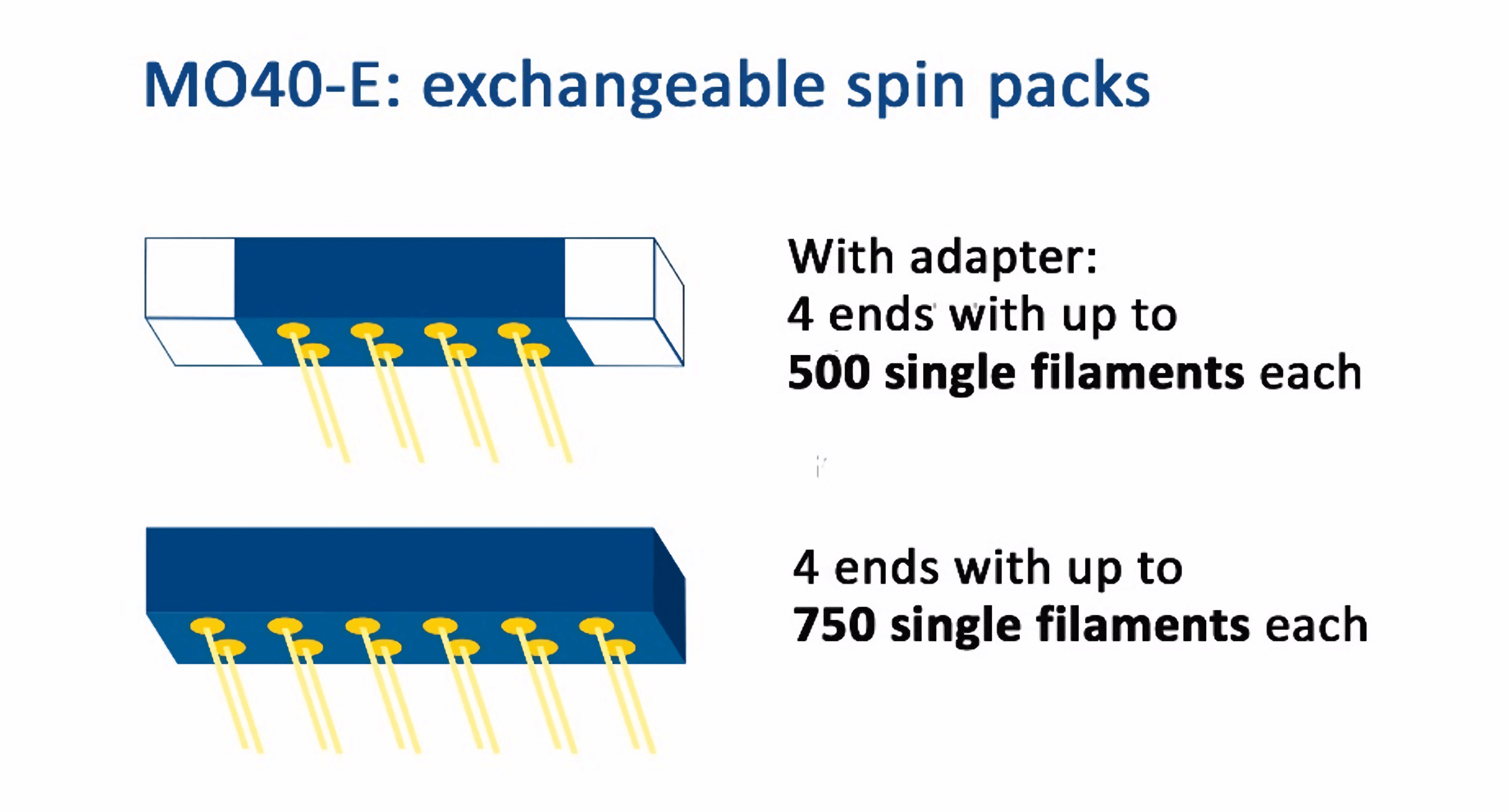
Figure 3 The MO40-E can produce standard or high-count yarn
A.T.E. has more than 80 years of experience in the Indian textile industry and provides end-to-end solutions across the textile value chain. Its domain knowledge and relationships have made it a sought after partner for carpet manufacturing machinery.

